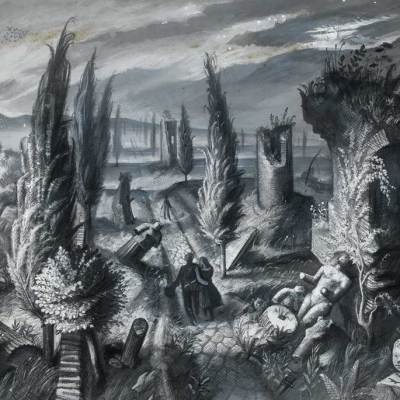‘Dada and Surrealist Objects’ at Blain|Di Donna is the first exhibition in the United States devoted to the three-dimensional creations of these kindred movements. This ‘historical group exhibition’ of 78 objects was curated in association with the American specialist Timothy Baum, and ably communicates the more material predilections of the Surrealists and Dadaists; that is, their shared attentions to the body, and the sensual motives that accompanied their legendary whimsy.
Venus de Milo with Drawers (1936/1964), Salvador Dali © Salvador Dalí, Fundació Gala-Salvador Dalí, Artists Rights Society (ARS), New York 2013

The two intimately scaled exhibition rooms at Blain|Di Donna are peopled with objects that – being more or less suggestive of human forms – give off a vital sense of being in conversation with one another. Chronological and nominal restrictions are not applied here. Instead, a lively affinity determines the carefully arranged constellations of objects. Dalí’s Venus de Milo with Drawers presides in pale regalia alongside Hans Bellmer’s turgid La Poupée, whose disfigured innocence is ever disconcerting.
Within this same grouping, Alexander Calder’s Myrtle Burl – a covey of disarticulated wings – hovers on wires above a driftwood block whose burled texture contrasts beautifully with Man Ray’s marble Herma(phrodite) – the polished surface of which, in turn, complements both the chalky skin of Venus with Drawers and her tufted drawer pulls. As far as textures are concerned, however, the show-stopper is undoubtedly Miró’s 1950 Woman. Sculpture Object, which he executed in terracotta, bone, and crumpled iron – each element as impeccably balanced as the colour fields in his painted masterpieces.
‘Dada & Surrealist Objects’, Blain|Di Donna, installation shot, Courtesy of Blain|Di Donna/Art works by Alexander Calder © 2013 Calder Foundation, New York. Photo: Bonnie Morrison, 2013

The principal achievement of this show is that it has given itself over unreservedly to the object. The pieces here reveal and challenge what Duchamp himself considered a problematic boundary between the second and third dimensions. As he suggested in notes around the concept of infra-thin margins, our eyes habitually construct pictures of our surroundings – a kind of pictorial perception that obscures spatial depth. Somewhat like a veil, this boundary phenomenon reinforces Cartesian divisions of space.
Reaffirming the observer’s vital relationship to the object was a dominant motive behind Duchamp’s creations (his readymades in particular). This principle is more alive here than in more typical displays of Dada and Surrealist objects, where they are often presented as supplements to the (perennially more saleable) paintings of these celebrated artists.
Blain|Di Donna’s exhibition catalogue is itself a worthy object. The hot-pink foam board covers are, perhaps, even more inviting to the touch than Duchamp’s Prière de toucher, happily on display in the second room with velvet and foam rubber breast intact. The sculptural appendage on Duchamp’s catalogue (created in collaboration with Enrio Donati) still boasts a youthfully pert profile; and though it cannot withstand much handling at 66 years old, there are, fortunately, more than enough objects for the senses here.
‘Dada & Surrealist Objects’ is at Blain|Di Donna, New York, until 13 December 2013.



